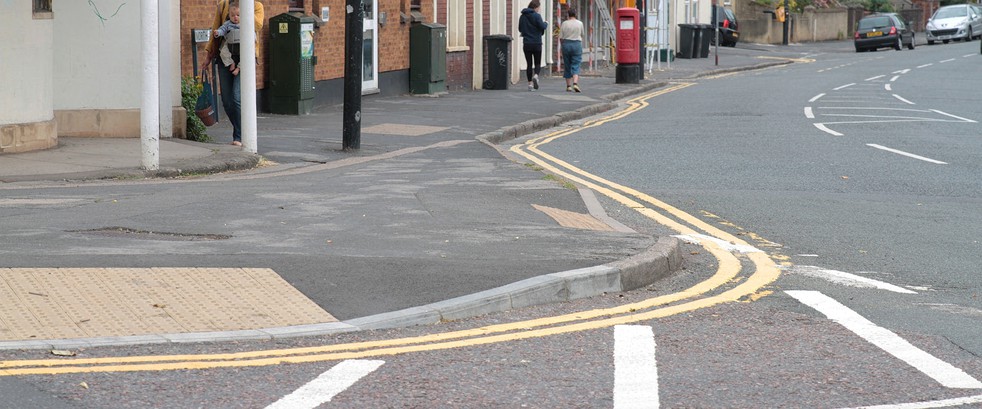Yellow Lines

Yellow lines are used to prevent vehicles parking by the side of the road.
Double Yellow lines are the most common parking restriction used - they do not allow vehicles to wait at the side of the road at any time. However, loading or unloading from the vehicle is permitted, and setting down or picking passengers is also permitted.
Single Yellow lines have different rules. Near a single yellow line there will be an upright sign with information about when vehicles are allowed to park - this could exclude certain times of the day or weekdays for example.
Somerset County Council can issue a parking fine to vehicle owners which do not follow these rules.
Disadvantages
- Installing parking restrictions with yellow lines requires a long legal process which involves consulting people and businesses in the surrounding area. This makes double yellow lines a very expensive measure
- Removing parked cars with yellow lines creates more road space, which may cause motor vehicle speeds to increase
- In residential areas, losing parking space may be an issue for people trying to park near their home
- In areas near shops and other businesses, customers using their cars may not be able to park easily
Alternatives
White Lines
If multiple properties share an entrance, white lines could be used instead of yellow lines. White lines do not require a legal process, so they are significantly cheaper and quicker to install. However, they are only advisory, so it is not illegal to park on a white line.
In some very exceptional circumstances, a white line could be used on an individual entrance.
Advantages
- Prevent vehicles blocking access to homes or business by parking in front of entrances
- Keep traffic flowing on roads which are not wide enough for parked vehicles and moving traffic
- Enhance road safety for pedestrians, and increase visibility for vehicle drivers and cyclists
- Assist child pedestrians to cross the road at junctions, where they may not be able to see over the top of cars
- Discourages car use in central areas, which may help to ease congestion and de-clutter streets
Effectiveness
Double yellow lines are normally very effective at preventing vehicles parking where they are painted. This is because traffic enforcement officers are used by local authorities to patrol streets and issue fines to motorists who have parked on double yellow lines.
In residential areas with many children under the age of 10, there is a large safety benefit in reducing the amount of cars parked on the street. Child pedestrians are less visible to car drivers because a line of parked cars hides the child from car drivers.
Parking restrictions around junctions may be particularly useful, as this allows both the child and car drivers to see oncoming vehicles.
Reducing the amount of parked cars is useful for both child pedestrians and children playing in the street. In both these cases, the child will be able to see moving vehicles more easily and this will help them avoid being injured. Car drivers will have a better view of the child’s movements, and may be able to stop more easily if a child moves into the road.
Restrictions
- Difficult to paint on cobbled streets / poor road surfaces
- Somerset County Council won't install yellow lines on private land unless the land owner requests it, and the Council is reimbursed
- This scheme requires a Traffic Regulation Order before it is installed, which is subject to a local consultation process
There's also some general restrictions to note for all schemes
Advanced information
Safety benefits for children are based on a robust study from Agran, Winn, Anderson, Tran, and Del Valle (1996). The study, based in California, examined individual cases of child collisions, and studied a closely matching comparison group.
Results showed the odds ratio of a child traffic injury when 18 or more cars are parked per 152 meters are 15 times that at locations where 0 - 11 cars are parked per 152 meters.
The statistical confidence in these results was very strong, and the study accounted for external factors.
References
Agran, P., Winn, D., Anderson, C., Tran, C., Del Valle, C. (1996) The Role of the Physical and Traffic Environment in Child Pedestrian Injuries. Pediatrics 98 (6) pp. 1096 - 1103




